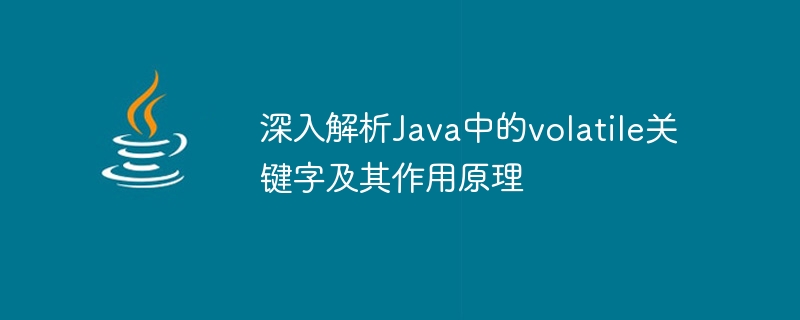

In-depth analysis of the volatile keyword in Java and its working principle
In multi-threaded programming, it is very important to ensure the visibility and consistency of data. In order to solve problems that may arise when multiple threads access shared variables concurrently, Java provides a keyword volatile.
1. The role of volatile keyword
Java's volatile keyword can ensure the visibility of modified variables in a multi-threaded environment and prohibit instruction rearrangement.
The so-called visibility means that when a thread modifies a variable, other threads can immediately see the modified value. In order to improve the running efficiency of the program, instruction rearrangement will reorder the instruction sequence, but sometimes it will destroy the correctness of the code.
2. Usage of volatile keyword
In Java, use the volatile keyword by declaring a variable as volatile. The following is a simple code example:
public class VolatileExample { private volatile boolean flag = false; public void writeFlag() { flag = true; } public void readFlag() { while (!flag) { // do something } System.out.println("Flag is true"); } }
In the above code, we declare a volatile boolean type variable. Set the flag to true in the writeFlag method, and check whether the value of the flag is true in the readFlag method. If not, wait in a loop.
3. Principle of the volatile keyword
Specifically, the volatile keyword achieves visibility and prohibits instruction rearrangement through the following two mechanisms:
Because the volatile keyword uses memory barriers and the happens-before principle, it can ensure that operations on volatile variables are thread-safe.
4. Applicable Scenarios of the Volatile Keyword
Although the volatile keyword has the function of ensuring visibility and prohibiting command rearrangement, it is not applicable to all situations. The following are some examples of applicable scenarios:
public class Singleton { private volatile static Singleton instance; private Singleton() { } public static Singleton getInstance() { if (instance == null) { synchronized (Singleton.class) { if (instance == null) { instance = new Singleton(); } } } return instance; } }
In the above code, use the volatile keyword to ensure that the instance variable is visible to all threads.
Summary:
The Volatile keyword can ensure the visibility of variables and prohibit instruction rearrangement in a multi-threaded environment. It implements these functions through memory barriers and happens-before principles, and is suitable for some specific scenarios. When writing multi-threaded programs, we should use the volatile keyword reasonably according to the actual situation to ensure the correctness and efficiency of the program.
The above is the detailed content of Analysis of Java volatile keyword and detailed explanation of its function and principle. For more information, please follow other related articles on the PHP Chinese website!




